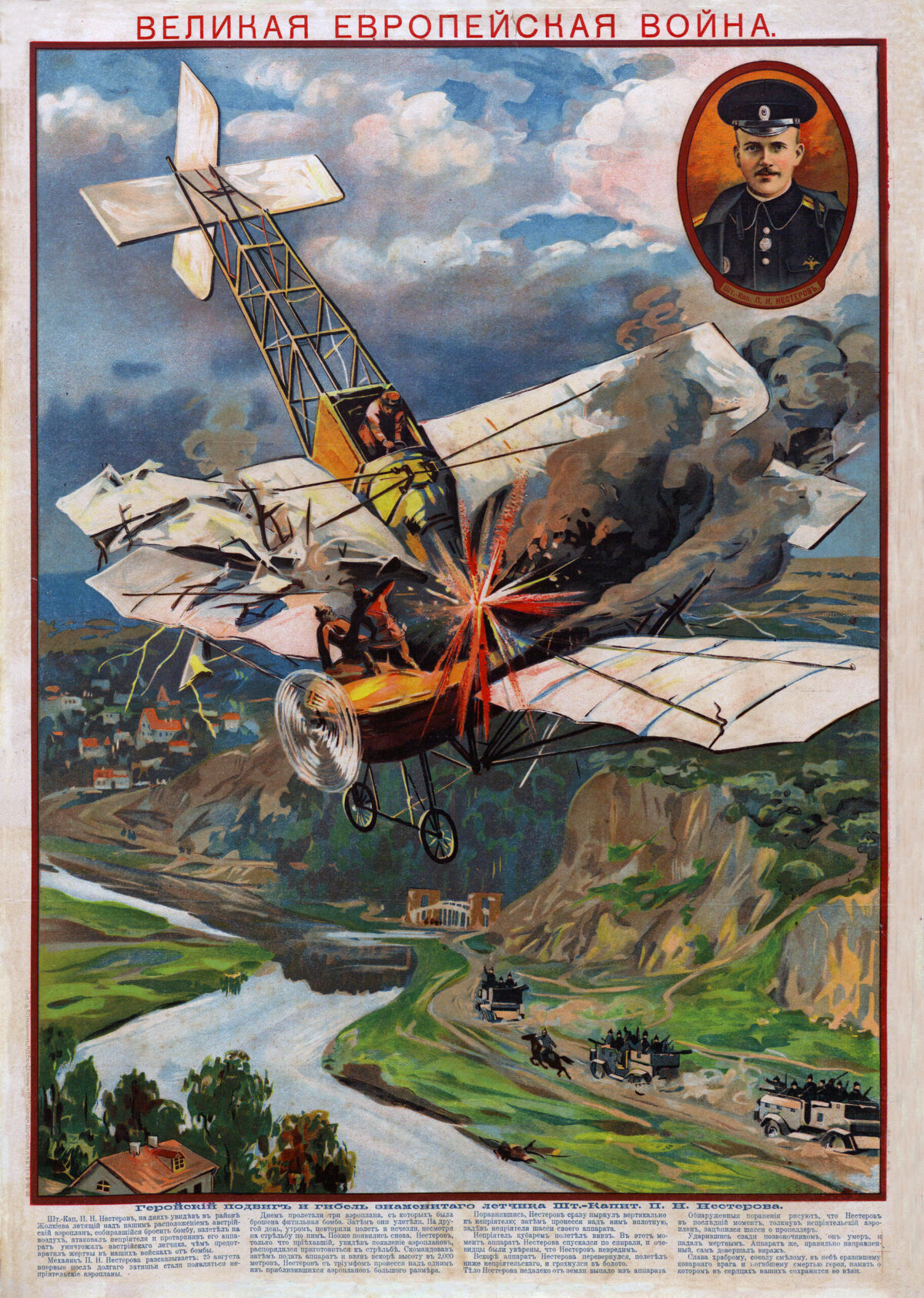This Russian print, created in 1914, and titled “The Great European War: A Heroic Feat and Death of the Famous Pilot Staff Captain P. N. Nesterov,” depicts an incident from that year when Staff Capt. Pyotr Nikolayevich Nesterov deliberately rammed his Morane Saulnier Type G into an Austrian Albatros B.II over Ukraine.
According to Nesterov’s mechanic, after a relative period of calm, enemy airplanes had returned to their vicinity:
“Nesterov, who had just arrived and seeing the airplanes ordered preparations for firing at the planes and then ordered that his own airplane be made ready; soon he was 2,000 meters above the ground. Nesterov triumphantly flew over one of the large approaching airplanes. Having gotten closer to the enemy, Nesterov dove toward the enemy in a vertical position; he then moved even closer toward it, hitting the enemy airplane with the chassis of his airplane. The enemy flew headlong down, and Nesterov’s airplane began descending in a spiral. Witnesses were convinced that Nesterov was alive. Soon Nesterov’s machine capsized, dropped below the enemy’s airplane and crashed into a swamp. Close to the surface Nesterov’s body fell off the plane. His injuries suggested that at the last moment Nesterov, having pushed the enemy airplane, got his airplane’s chassis caught in the propeller. Injuring his spine, he died and fell, already dead. Directed accurately by Nesterov, his airplane completed the maneuver on its own.”
The print is an example of a lubok. During World War I, these popular and colorful images could be used to communicate news or propaganda to the Russian people.

